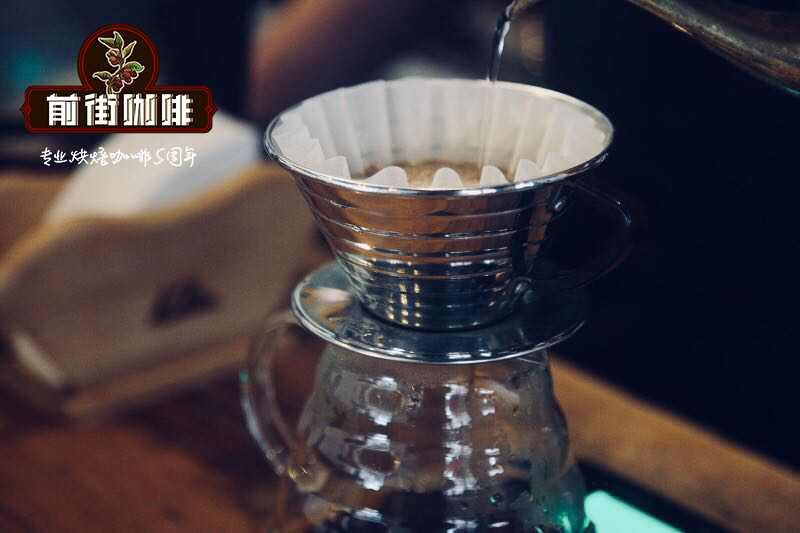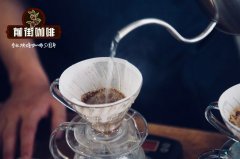Brazilian coffee estate, brazil dona coffee estate coffee flavor taste characteristics.

Professional coffee knowledge exchange more coffee bean information please follow the coffee workshop (Wechat official account cafe_style)
Coffee was first introduced to Brazil in the early 18th century. In 1727, the Brazilian government sent a personable army officer to secretly bring coffee seeds back to Brazil from French Gaiana under the pretext of mediating border disputes. It is said that the governor's wife of French Gayana was so fascinated by the officer that she secretly brought coffee tree seeds to him at a farewell dinner party. At present, 2 million hectares of land in Brazil is used to grow coffee, with the largest being Arabica. The beans will eventually be sent to the big bakers in various countries, also known as Santos (in the name of the export port of Shantos, not the producing area). Brazil has also proved to be able to produce gourmet coffee and small quantities of coffee, and the local boutique coffee can not only be provided by small-scale coffee farmers. The main coffee producing areas in Brazil are Sul de Minas South Minas, Matas de Minas Minas South East Mountain Forest, Cerrado Hirado, the north-central mausoleum of Chapadas de Minas Minas, Mogiana, Paran á Parana and Bahia Bachia. There are both traditional varieties and variants, such as Bourbon, Mondo Novo Mondonovo, Icat ú Ikatu, Kaduai, Iapar, cultivated card Taiyi.
Brazil is the largest coffee producer in the world, accounting for about 30% of coffee production, but because Brazil is located in tropical rain forest areas with relatively flat terrain and few high-altitude mountain forests, most coffee is grown in low-altitude non-volcanic soil areas. And there is not much shade for shading, resulting in the disadvantage that Brazilian beans grow quickly, but the density and soft flavor of coffee does not change much. Coupled with large-scale machine harvesting of coffee beans with a wide range of maturity differences in coffee harvesting at the same time, so that the quality of Brazilian beans is not particularly outstanding has always stayed in the category of commercial beans. Since 2000, due to the inducement of coffee competition, the quality of coffee beans produced in the high-altitude areas of the south has been appreciated, mainly by the farms around the Minas high platform, and the coffee quality is also the largest among Brazilian beans, such as Syracuse in the west of Minas and Matas in the east. In Bashiya in the north or small farms in the south, Minas has almost become synonymous with Brazilian boutique coffee. In recent years, the coffee competition is so accurate that it is separated by treatment (water treatment? Half-washed? Half-sun? Solarization) to develop a variety of flavors? Taste? Yu Yun is quite different from the traditional Brazilian coffee. In particular, half-sun and solarization performed best, increasing the aroma of clean, low-acidity fruit and reducing the rich chocolate flavor.
Brazil's Donna Farm, located in the southern Minas region, is owned by the Campos family. Coffee cultivation was launched in 1977, set green standards as early as the planting stage, and far exceeded Brazil's environmental laws. Drainage subsidizes and maintains local rivers, only ripe red cherries are harvested by hand, and maintains its own nursery that provides nearly 10% of the annual yield.
Eduardo Campos-his family has a long history of growing coffee in South Minas-inherited a piece of land from his father, later known as Donna Manor, and named it after his mother. The farm, which began operation in 1977, was the first farm in Pattusdiminas to start growing coffee. During this period, the concept of certification has not yet been introduced into Brazil, but Eduardo has begun to pay attention to environmental issues. He believes: "Nature is always the first priority!" "in terms of implementation, the conservation work of the manor far exceeds Brazil's environmental regulations, native tree species and shrubs, and the environmental impact caused by animal husbandry is also mitigated by water conservation measures along the riverbanks. These methods effectively maintain the natural environment and shrub vegetation of Hirado, Brazil.
The electronic screening machine can identify the defects of raw beans that can not be seen by human eyes, automatically measure the size and density, and screen quickly. The drying after the treatment process is run by a fully automated dryer for 24 hours to detect moisture content at any time. The final product is coffee of extremely stable quality, which has won many awards internationally. This coffee is treated with Pulped Natural, which is commonly used on fine farms. After the peel and flesh of ripe coffee cherries are removed, part of the pulp mucus is retained on the outside of the fruit and then dried. Excellent fruit drying process can produce clean, mild acidity and unique sweetness.
Important Notice :
前街咖啡 FrontStreet Coffee has moved to new addredd:
FrontStreet Coffee Address: 315,Donghua East Road,GuangZhou
Tel:020 38364473
- Prev

Panama coffee estate, panama leilida estate coffee taste flavor characteristics.
Professional coffee knowledge exchange More coffee bean information Please pay attention to Coffee Workshop (Weixin Official Accounts cafe_style) Lerida Manor is now run by the Chiari family and is located near Poquet City, Chriqui Province, Panama. Lerida Estate has a strong tradition of growing fine coffee, dating back to 1929, when Lerida first exported coffee to Germany. Le
- Next

Panamanian Coffee Manor, Panamanian Santa Teresa Manor.
Professional coffee knowledge exchange more coffee bean information Please pay attention to Coffee Workshop (Wechat official account cafe_style) located at the border of North and South America, Panama faces the Pacific Ocean on the left and the Atlantic Ocean on the right, so it has an important position as a bridge between the two oceans and occupies the key to this geography. Since it became a Spanish colony in 1501, it has begun to build the famous Panama Canal.
Related
- Detailed explanation of Jadeite planting Land in Panamanian Jadeite Manor introduction to the grading system of Jadeite competitive bidding, Red bid, Green bid and Rose Summer
- Story of Coffee planting in Brenka region of Costa Rica Stonehenge Manor anaerobic heavy honey treatment of flavor mouth
- What's on the barrel of Blue Mountain Coffee beans?
- Can American coffee also pull flowers? How to use hot American style to pull out a good-looking pattern?
- Can you make a cold extract with coffee beans? What is the right proportion for cold-extracted coffee formula?
- Indonesian PWN Gold Mandrine Coffee Origin Features Flavor How to Chong? Mandolin coffee is American.
- A brief introduction to the flavor characteristics of Brazilian yellow bourbon coffee beans
- What is the effect of different water quality on the flavor of cold-extracted coffee? What kind of water is best for brewing coffee?
- Why do you think of Rose Summer whenever you mention Panamanian coffee?
- Introduction to the characteristics of authentic blue mountain coffee bean producing areas? What is the CIB Coffee Authority in Jamaica?

